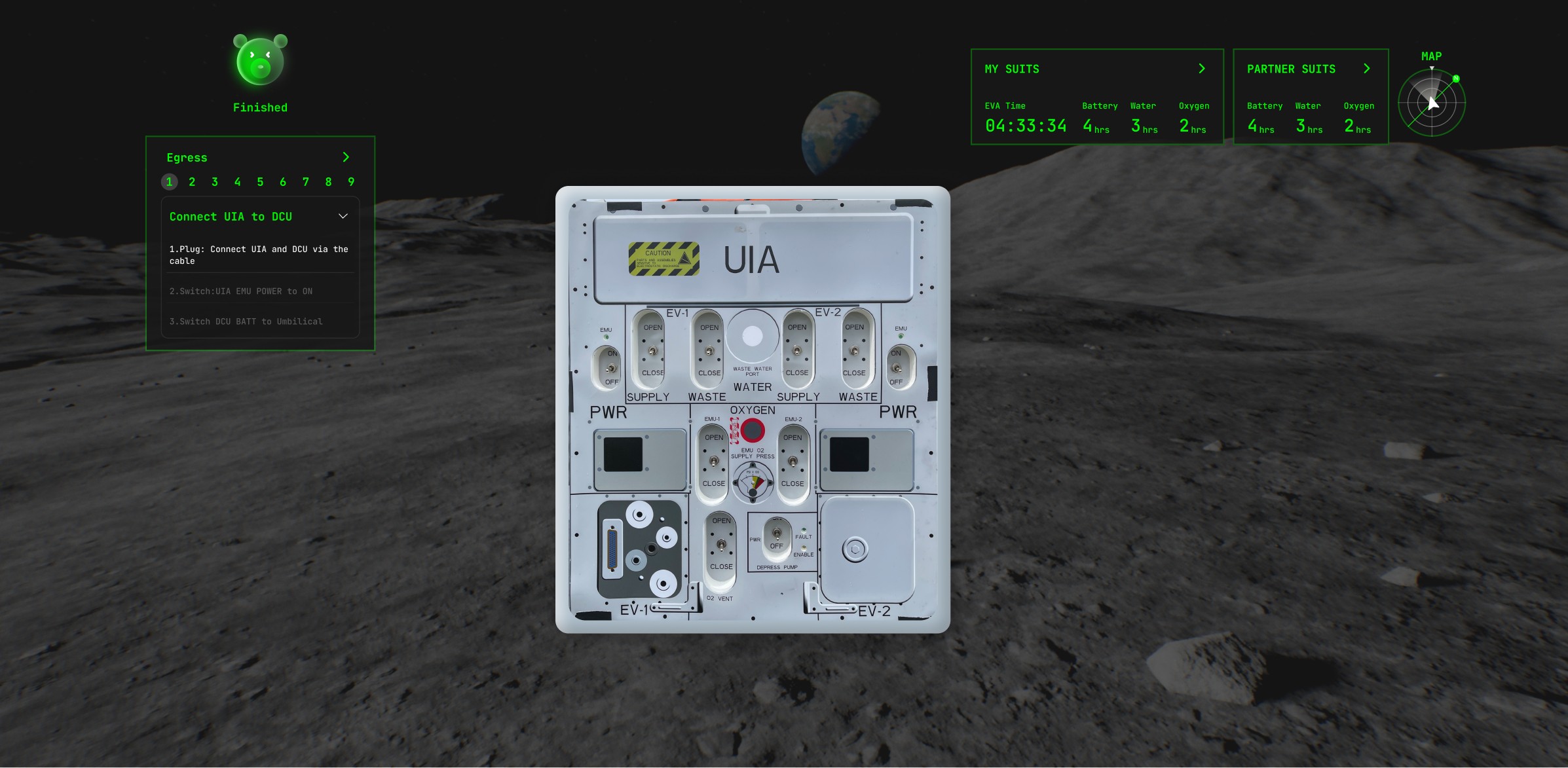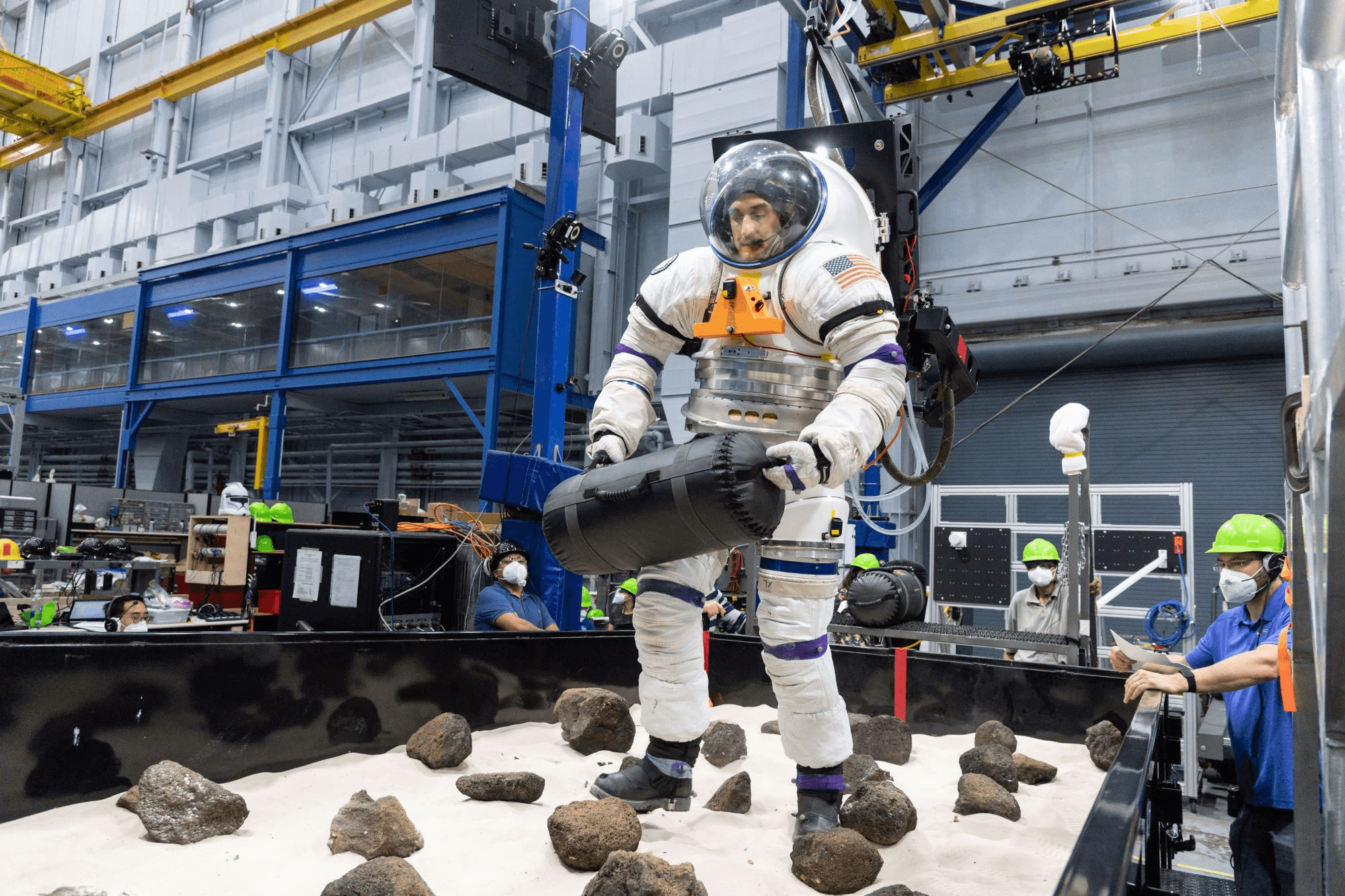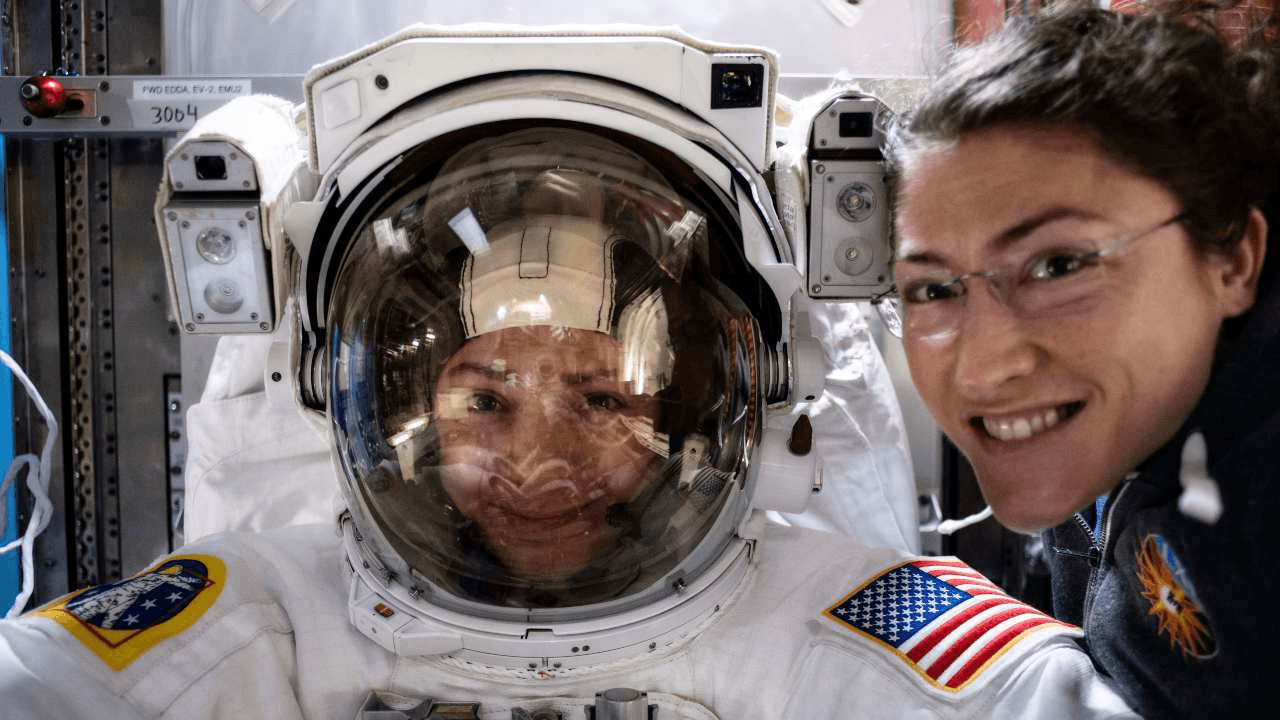
In 2023, I joined a UC Berkeley team selected for NASA’s SUITS challenge. We were among the 11 top groups chosen by NASA to design an AR software on HoloLens to aid lunar missions. This project is still developing, more animated graphics will be provided soon in May 2024.
Astronauts need to complete a series of tasks on the moon, but they face numerous physical and cognitive limitations due to the challenging environment.
Restricted Movement

Multitasking Limitations

Safety Concerns

Limited Visibility
Opportunities
✨
How might we help astronauts explore the moon under physical and cognitive limitations using AI and AR technology?
Design Highlights
LLM-Powered Responsive Voice Assistant
Ursa's voice assistant is enhanced with Large Language Models (LLM), offering astronauts tailored instructions and feedback
Non-intrusive Interfaces
Ursa features non-intrusive interfaces strategically placed in the user's peripheral vision, ensuring essential information is accessible without obstructing the lunar environment
Design Process
Context
Who is our user?
Astronaut

Heavy things on the hand
Astronauts often need to carry heavy equipment in their hands, which can hinder their ability to operate system with hands.
Harsh lunar environments
The extreme conditions on the moon require astronauts to continuously monitor their suits' signals and surrounding environment. Consequently, any system used must minimize cognitive load to prevent overburdening the astronauts and ensure their focus remains on critical tasks.
What's the NASA’s Tasks
Task 1 - Navigation
Task 2 - Egress (Prepare suits for outdoor tasks)
Task 3 - Geo Sampling
Task 4 - Control Rover
Task 5 - Communicate between LMCC and Astronaut
Explore
I first created 2D prototypes to see how the requirements would function on a digital screen.
To avoid confusing feedback for different needs, I identified three key interaction models through inspection.
I also built an interactive prototype with voice flow to demonstrate the voice assistance feature.
Final Design
Principle 1
Provide actionable insights, not just raw data.
Don’t
User
: “Ursa, what’s my heart rate?”
Ursa
: “Your heart rate is 90 bpm.”
This provides only the number without any interpretation or guidance.
Do
User
: “Ursa, what’s my heart rate?”
Ursa
: “Your heart rate is 90 bpm {heart_rate}, and it’s within the nominal {nominal} range.”
Here, it gives the heart rate and informs the astronaut that it’s within a safe range.
Principle 2
The system should dynamically recognize and interpret alternative words that convey the same intent.
We used a structure
Intent
+
Utterance
+
Alternative Slot
to breakdown users’ command
Notes
Intent: The objective of voice interaction
Utterance: How the user phrases a command
Slot: Required or optional variables
Intent
User wants to move to the next task
Utterance
User
: “Hi Ursa!”
The system is activated by the unique call-sign "Hi Ursa," chosen to avoid accidental triggers in regular conversations.
Alternative Slot
User
: “Move to next task”
Users uses different word should be able to activate same command, such as “Next” , “Finished”, “Task 2”, or etc
Principle 3
Use visual feedback to assist communication
Use visual feedback to enhance communicaton
Designing VUI to avoid ambiguity
Clear, precise voice commands are crucial to prevent misunderstandings. We focused on creating intuitive prompts and responses to ensure users received accurate feedback from the AR assistant
Balancing 3D AR and 2D design
Designing for 3D AR environments differs greatly from 2D screens. We learned that eye distance and spatial perception require special attention to ensure comfortable, immersive interactions.
Contact Me!
yanishi1221@gmail.com









